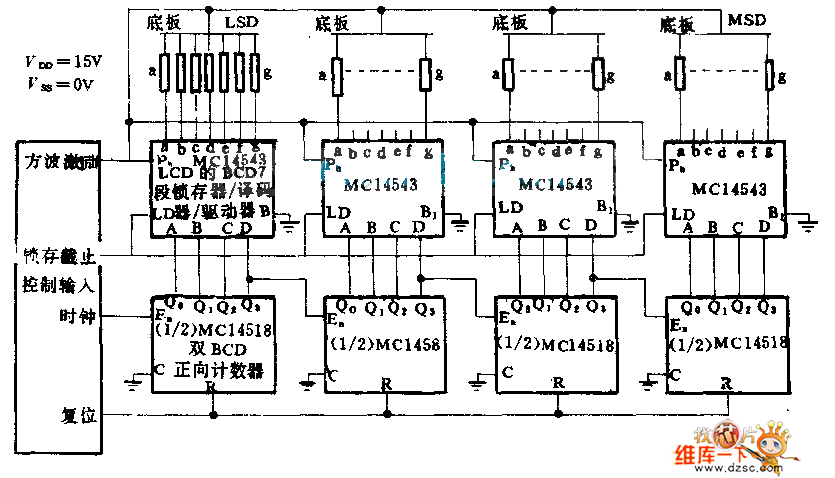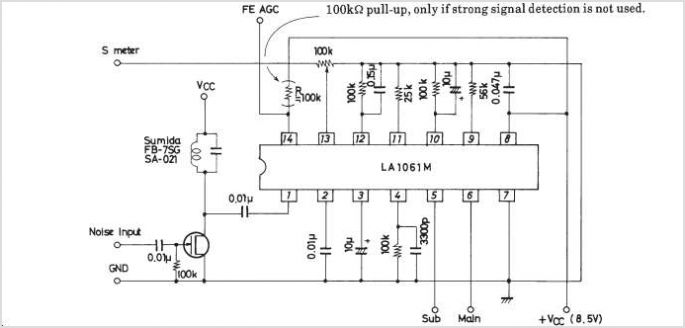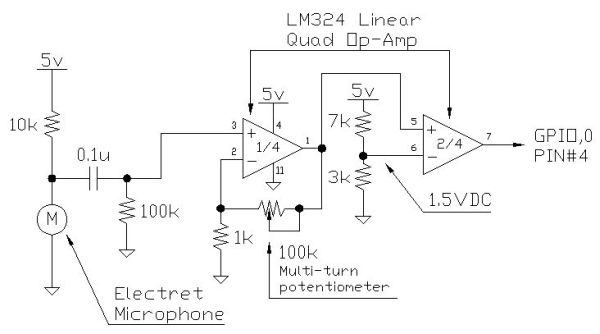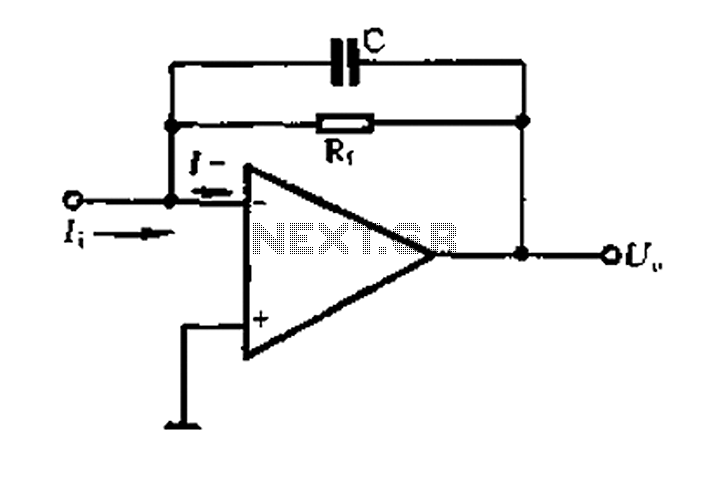
Musical doorbell circuit with two trigger modes
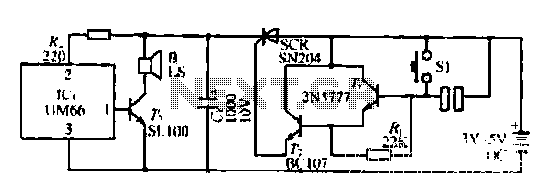
A few custom integrated circuits began to play music. When the song ends, no electricity flows through the thyristor, which then cuts off the light, causing the phototransistor to activate. The system is designed with a touchpad; each touch generates a trigger pulse for the thyristor rectifier. The circuit can either produce music or light based on the touch input. A push-button switch opens the circuit, allowing the doorbell to play a melody.
The described circuit incorporates custom integrated circuits (ICs) that function as both a music player and a light control system. The operation begins with the activation of the ICs, which generate audio output in the form of music. This is achieved through a series of oscillators and amplifiers designed to produce sound waves that correspond to musical notes.
Once the music concludes, the circuit enters a state where the thyristor, a semiconductor device used to control current, becomes inactive due to the absence of electrical flow. This action results in the cessation of light output, which is monitored by a phototransistor. The phototransistor is used as a light sensor, detecting changes in light levels to provide feedback to the system.
The touchpad interface serves as the primary user input mechanism. Each interaction with the touchpad generates a trigger pulse that activates the thyristor rectifier. This pulse is essential for controlling the flow of current through the circuit, enabling the production of sound or light depending on the user's interaction.
The circuit design also includes a push-button switch that, when pressed, opens the circuit. This functionality is critical for applications such as a doorbell, where a user can initiate a sound output (the "mountain music") by simply pressing the button, thus providing an audible alert.
Overall, this system showcases an integrated approach to audio and light control, utilizing touch-based inputs and feedback mechanisms to create an interactive electronic experience. The design can be adapted for various applications, including decorative lighting or alert systems, where both sound and light are required in response to user input.L a few custom IC 66} began to slow music. When the song ends, no electricity flows through the thyristor, the thyristor then cut straight in the light once again shines on the phototransistor Bu [I a mountain. Roundworm parallel Tiao Ping] I XsJ, people hang block touchpad, just "to have every touch, its population will be out of a trigger pulse thyristor rectifier car, J fork issue is music, therefore, the same circuit can be light or tip sheet l touch to make it work. button to open the circuit can cry Sl 1 normal state, the push-button F, the doorbell made mountain music.
The described circuit incorporates custom integrated circuits (ICs) that function as both a music player and a light control system. The operation begins with the activation of the ICs, which generate audio output in the form of music. This is achieved through a series of oscillators and amplifiers designed to produce sound waves that correspond to musical notes.
Once the music concludes, the circuit enters a state where the thyristor, a semiconductor device used to control current, becomes inactive due to the absence of electrical flow. This action results in the cessation of light output, which is monitored by a phototransistor. The phototransistor is used as a light sensor, detecting changes in light levels to provide feedback to the system.
The touchpad interface serves as the primary user input mechanism. Each interaction with the touchpad generates a trigger pulse that activates the thyristor rectifier. This pulse is essential for controlling the flow of current through the circuit, enabling the production of sound or light depending on the user's interaction.
The circuit design also includes a push-button switch that, when pressed, opens the circuit. This functionality is critical for applications such as a doorbell, where a user can initiate a sound output (the "mountain music") by simply pressing the button, thus providing an audible alert.
Overall, this system showcases an integrated approach to audio and light control, utilizing touch-based inputs and feedback mechanisms to create an interactive electronic experience. The design can be adapted for various applications, including decorative lighting or alert systems, where both sound and light are required in response to user input.L a few custom IC 66} began to slow music. When the song ends, no electricity flows through the thyristor, the thyristor then cut straight in the light once again shines on the phototransistor Bu [I a mountain. Roundworm parallel Tiao Ping] I XsJ, people hang block touchpad, just "to have every touch, its population will be out of a trigger pulse thyristor rectifier car, J fork issue is music, therefore, the same circuit can be light or tip sheet l touch to make it work. button to open the circuit can cry Sl 1 normal state, the push-button F, the doorbell made mountain music.

